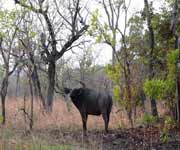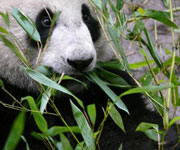World Heritage Comoe National Park is one of the largest protected areas in West Africa; this park is characterized by its great plant diversity. Due to the presence of the Comoe river, it contains plants which are normally only found much farther south, such as shrub savannahs and patches of thick rainforest. Comoe National Park, situated in the north-east of Cote d'Ivoire, with the surface of 1149450 ha, is one of the largest protected areas in West Africa. It is characterized by its great plant diversity. The Comoé River, which runs through the Park, explains the presence of group of plants that are usually found further south, such as the shrub savannas and patches of thick rainforest.
Country: Ivory Coast
Continent: Africa
Criterion: ix, x
Category: Under Danger
Date of Inscription: 1983
wildlife species
The property thus constitutes an outstanding example of transitional habitat between the forest and the savanna. The variety of the habitats engenders a wide diversity of wildlife species. Currently, the property is one of the rare sanctuaries for a variety of West-African biological species.
 |
| Wild Animal Comoe National Park |
Browse Gallery Plus UNESCO Storyline
UNESCO Criterion
Criterion (ix): The property, due to its geographical location and vast area dedicated to the conservation of natural resources, is an ecological unit of particular importance. Its geomorphology comprises wide plains with deep ridges carved by the Comoe River and its tributaries (Bavé, Iringou, Kongo), allowing humid plant growth towards the north and favouring the presence of wildlife in the forest zone.
The property also contains green rocky inselbergs in a north-south line, surmounted by rocky ridges that form in the centre and the north, isolated massifs and small chains of 500m to 600m in altitude. Comoé National Park contains a remarkable variety of habitats, notably savannas, wooded savannas, gallery forests, fluvial forests and riparian grasslands providing an outstanding example of transitional habitats from forest to savanna.
Criterion (x): Due to the phytogeographical situation and the crossing of the River Comoé for over 230 kilometres, Comoé National Park teems with a vast variety of animal and plant species. This location in fact makes this property a zone where the areas of division of numerous west-African plant and animal species mingle.
Browse All UNESCO World Heritage Sites in
Jordan. The original UNESCO inscription
Here!!!




